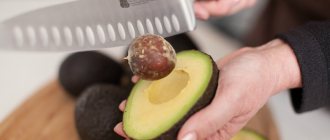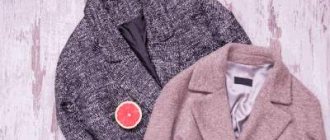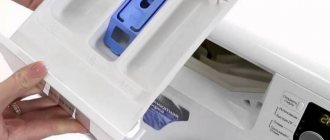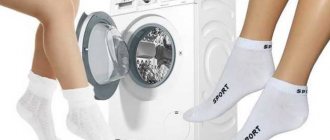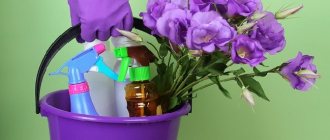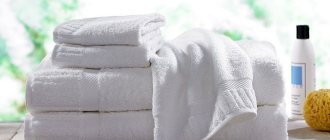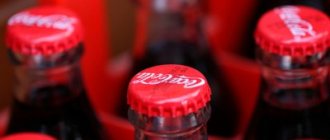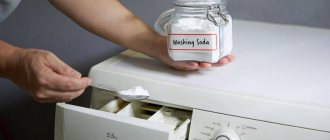Whiteness in its original form is sodium hypochlorite, or more simply put, bleach, which has been widely used in disinfection for more than 100 years. Sodium hypochlorite is used for water disinfection, medical disinfection, fabric bleaching, washing surfaces and objects. It is found in a large number of professional and household cleaning products, which can be easily found in hardware stores, supermarket departments and online. Another advantage of whiteness can be considered its relatively low cost.
Carefully!
Chlorine is aggressive.
Do not use bleach or any other chlorine-containing products on colored fabrics, leather, wool, or metal products. This can lead to discoloration, loss of properties and corrosion in the case of metals. Whiteness now is not one specific means. Many manufacturers include whiteness in the trade name of their drugs for recognition, with a reference to Soviet whiteness. In essence, all of these products contain sodium hypochlorite and are indeed the same whiteness, however, here you need to pay attention to the fact that the concentration of chlorine in the whiteness of different manufacturers may vary.
The effectiveness of the product in destroying fungi and bacteria has been proven, but can whiteness be used to disinfect against coronavirus?
What chlorine solution is used for disinfection?
To disinfect equipment, use a clarified (settled) solution of bleach, the so-called “chlorine water”. Chlorine water is prepared from a concentrated (original) 10% clarified solution of bleach.
Interesting materials:
How to copy a link to your YouTube? How to hide defects on a wall? How to hide the bottom panel on Samsung? How to hide a folder in Total Commander? How to hide wiring in the wall? How to hide hidden folders in Mac OS? How to change the interface language? How to change the language in Batman Arkham Knight Epic Games? How to change language in chrome? How to change the main activity of an LLC?
Is it possible to use white to disinfect against coronavirus?
According to recommendations
Rospotrebnadzor, sodium hypochlorite-based products can be used to disinfect coronavirus, but provided that their concentration in the solution ready for use is at least 0.5%. Other chlorine substances are also considered suitable for Covid disinfection:
- Sodium salt of dichloroisocyanuric acid – concentration 0.06%.
- Chloramine B – concentration 3.0%.
- Calcium hypochlorite – concentration 0.5%.
- Dichloranthine – concentration 0.005%.
The concentration is based on active chlorine in the ready-made solution. To find out whether bleach or another chlorine disinfectant can be used to disinfect against coronavirus, look at its composition on the label. It always indicates what kind of chlorine and in what volume it is contained in the bottle in your hands. Some products are completely ready for use, others need to be diluted with water to the desired concentration, others can be used either way, depending on what exactly you need to process.
How to clean linoleum in the kitchen?
Linoleum in the kitchen is subjected to special tests, it’s not worth even listing which ones. How to deal with such pollution?
- Stains from greasy food, if they were not removed in time, can be washed off with ammonia.
- Sometimes dishwashing detergent helps, because it is designed to remove grease. Drop a little into a bucket of water and wipe the entire floor. Just don’t overdo it, otherwise cleaning will take too much time to wash away soap stains.
- Iodine can be removed with camphor alcohol.
- If ink from a pen or felt-tip pen gets on the floor, only fine sandpaper will help. Gently apply it to the stain until it disappears, then buff with a woolen cloth.
- And of course the famous shoe stripes. They are removed the easiest way, with a regular eraser.
- If the coffee stain is old, in the most visible place and you just need to get rid of it, you will have to take gasoline or kerosene. Yes, this is harmful to the coating, but what can you do if everything is so serious?
Removing stains of various origins
Proper care is the key to the durability of the coating.
How to care for linoleum:
- Pemolux cannot be used. The drawing will be erased along with the old dirt.
- Orthophosphoric acid cannot be used. A very dirty floor will be cleaned, but the linoleum will deteriorate.
- Cleaning with metal nozzles is not recommended. The coating will be scratched.
- It is allowed to use a washing vacuum cleaner, a regular vacuum cleaner and a steam mop.
Surface cleaning is carried out with homemade compounds or household chemicals. Linoleum care products are selected based on the type of stain.
Elderberry pulp will remove fresh oily marks. Crush the berries, apply the mixture to the contaminated area, wait 10 minutes, remove the remains.
Old greasy marks are cleaned with alcohol. Moisten a cloth with the mixture and wipe the stain. Then rinse the floor with clean water.
From the professional line, use Mellerud. Dilute the cleaning agent in water, ratio 1:10. The resulting composition is used to wash floors.
Application of Mellerud for stubborn stains:
- Dampen a cloth napkin and spread over the dirty area.
- Leave for 40 minutes.
- Apply a second coat of Mellerud, perpendicular to the first.
- Wait until dry, wash the floor.
Mellerud removes dirt, polishes and cares for the coating at the same time. With regular use, it returns shine and leaves no streaks.
Zelenka (soap, washing powder, vinegar, potassium permanganate, ammonia, acetone)
The 99% brilliant green solution cannot be opened carefully so as not to stain the table, hands and floors. The medical composition is not absorbed, but smeared. As a result, everything in the house is stained with brilliant green.
How to wash linoleum? To remove fresh chemical stains and dirt from the surface, use washing powder, hydrogen peroxide (if the floor is light), laundry soap and chlorine-containing gels.
The ingrained green stuff can be washed off with white spirit or any alcohol.
How to clean linoleum:
- Wear gloves. Take a kitchen sponge and a prepared cleaning product for washing linoleum.
- Treat green spots. Leave for 5–15 minutes.
- Rinse off with a cloth soaked in clean water.
It is not difficult to wash linoleum from brilliant green. The floor is easy to clean. But, if the brilliant green has eaten into the pores of the product, only household chemicals will help; folk remedies are useless.
Black stripes from shoes
Black marks remain from the rubber sole. You can erase it with a stationery eraser.
Wipe the black stripe with an eraser and remove dirt with a damp cloth.
To remove stains from linoleum, use ammonia or lemon juice. You can try rubbing it with washing powder.
The substance is volatile and disappears on its own over time. We need to wait a week. If the stain needs to be removed urgently, use folk remedies or household chemicals.
How to clean dirty linoleum:
- Cut the potato and rub the cut side onto the stain.
- Sprinkle with starch, add water, cover with a cloth and wait 10 hours. Wash with soapy water.
- Rub the cut of a lemon onto the dirty area.
- Use ascorbic acid. Dissolve one tablet in water to make a paste. Rub until the stain disappears.
- Iodine disproportions (dissolves) in alkaline and aqueous media. Use any alkaline composition as a detergent for linoleum.
- Apply Whitener and other products with chlorine. Clean the white floor. The dark coating will become discolored.
Detergents for cleaning linoleum from iodine stains are used to remove them from other surfaces. Enamel, painted walls or glass can be cleaned with such compounds.
Beverages
Cleaning linoleum from carbonated liquids is carried out with a soap solution. It is made from dishwashing gel, shampoo or a special composition. Carbonated drinks leave a sticky residue that can be easily removed with plain water.
Traces of tea and coffee are washed away by gasoline or kerosene. Soak a piece of cloth in a flammable liquid and wipe off the dirt. Wash the treated area with the addition of essential oil. Otherwise, the smell will bother you for a long time.
Use purified gasoline to remove fresh and old stains.
Felt pen
The consequences of a child’s pranks make you wonder how to wash the linoleum if traces of markers and felt-tip pens appear on it.
How to clean the floor:
- Clean water-based markers with warm water. Dilute soap or washing powder.
- Alcohol-based markers can be washed with appropriate products. Medical, camphor or industrial alcohol will do.
Clean linoleum immediately after marks appear. Clean the surface promptly. The alcohol-based marker dye is quickly absorbed into the top layer of the coating.
Wax crayons are difficult to wash with water, and paraffin from candles cannot be removed this way either.
How to clean at home? Leave the wax to dry. Take a scraper and carefully remove the frozen paraffin.
Advantages and disadvantages
“Belizna” is a multifunctional product with a wide range of applications. In addition to whitening clothes, it is used to disinfect washable surfaces, bathroom fixtures, some types of dishes, aquariums and pet cages. Low cost along with good effectiveness are the reasons for the popularity of the product.
The main disadvantages of bleach:
- High chemical aggressiveness. If it comes into contact with unprotected skin or mucous membranes, it causes irritation, burns, and allergic reactions. Avoid getting the product into your eyes.
- An unpleasant chlorine odor, which some manufacturers soften with fruity and floral scents.
- Unpresentable design of the bottle, unreliable thread - costs compensated by the penny price.
How to wash linoleum to make it shine?
Do you want your old coating to shine like new? Is it possible to achieve this?
- When changing the floor covering, think ahead - as soon as the repair is completed, apply a special polish to the linoleum. It forms a film that will protect it from damage, burnout and dust settling.
- As for cleaning the floor itself, start with a vacuum cleaner or broom. This will help collect dust and fine sand, which means it will get rid of streaks and scratches that are so clearly visible on a smooth surface.
- If the floor is very dirty, change the water more often. Dirty water will smear and turn into the same stains and stains.
- Go to the store, look on the shelves of the hardware department for special bottles and jars containing liquid for cleaning floors, including those covered with linoleum. They are already designed for its capricious nature and contain surfactants that will not harm and polish the coating.
- From home recipes, they recommend, strange as it may sound, milk. It is diluted 1:1 with cool water and wiped the floor. Then again with clean water.
- The most shiny floor is obtained by rubbing with drying oil.
In this video, repairman Dmitry Sokolov will tell you the best way to update the color of linoleum on the floor:
How else to care: reliable means
The best remedy for all problems is prevention:
- As soon as you lay the floor, treat it with mastic or wax; all this can be easily bought now. Such measures will help maintain shine and prevent cracks.
- Furniture is the main enemy of linoleum; it presses it, leaves holes that you can’t get rid of later, and scratches it. It has long been an idea to glue pieces of felt to the legs. Don’t neglect it, the process may take some time to complete, but the furniture will not leave holes in the floor.
- The sun's rays make the drawing dull. Close the curtains on the windows during the day.
- If a hole has formed on the surface, you will have to replace the piece. Place a new one on it, cut along the contour, degrease and apply glue. If you try and do it with pinpoint precision, it will turn out completely unnoticed. In any case, you can always put a chair in this place.
Whitening clothes
Soaking clothes
Manufacturers of the drug allow the use of whiteness for items made from cotton or linen material. Silk, wool, synthetic fabric with a pattern or dyed in bright colors will lose its appearance due to exposure to bleaching components.
You cannot use the solution on old things - an aggressive chemical reaction will destroy worn fibers and cause whitish spots to appear.
There are several methods for using chlorine-containing products:
- Getting rid of yellow, gray tint - 2 tbsp. l. Whiteness is diluted in 10 liters of liquid, things are soaked for 1 hour. After rinsing, put it in the washing machine. This method is not suitable for fabrics with a weak structure - the aggressive action of diluted bleach will destroy it.
- Stain treatment - used only on thick fabrics. The concentrated substance is poured onto the problem area, after a few minutes the product is rinsed. Longer exposure will result in discoloration and whitish spots. Washing is carried out in a machine at a temperature of 60 degrees.
- Preservation of snow-white color is achieved by soaking the laundry for 20 minutes. Pre-prepare a solution in the following proportion: 5 liters of cool liquid per 1 tbsp. l. facilities. After completing the procedure, the laundry is thoroughly rinsed and washed with powder to neutralize the smell and effect of the bleach.
Bleaching of bed linen, kitchen towels and small items can also be done in a machine. Before the procedure, you need to read the documentation for the device:
- the operating instructions should not contain prohibitions on the use of chlorine-containing substances;
- if the outlet tubes of the device are made of rubber, then it is better to refrain from washing - they should be plastic, and the drum should have anti-corrosion protection;
- when bleaching, you cannot set the mode with maximum temperatures - this tactic will harm both clothes and equipment;
- the product is not poured into the dispenser, but inside - it must be diluted beforehand;
- Before washing, the laundry is soaked in cold liquid.
Important! The recommended mode for the machine is with a pre-wash followed by a double rinse. When using it, you will not need to rinse things a second time.
Ingrained dirt
Proper care of linoleum at home is not just daily washing, but also removing stubborn dirt.
How to clean linoleum floors? Caring compositions are selected in the departments of household chemicals, or made independently from improvised means.
Sauerkraut
The juice removes old household dirt well. The acid penetrates deep into the pores of the coating, leaving the surface clean and smooth.
Even stubborn dirt is removed. Treat problem areas with sauerkraut juice and wash with clean water.
Drying oil
The advantage of using drying oil is that it returns shine to linoleum and cleanses.
How to clean linoleum from stubborn dirt? Moisten a cotton swab, wipe the flooring, polish with a silk cloth.
Drying oil creates a protective coating. Cracks will not appear on the surface.
Melamine sponge
Ideal for cleaning any floor covering. Used to remove dirt from parquet, laminate and other coatings.
How to wash properly:
- Moisten the melamine sponge with water.
- Press with palms to remove excess moisture.
- Rub the tip onto the dirty area.
The melamine sponge removes stains of paint, felt-tip pens, markers, pencils, ink marks, and greasy stains. Cleans all kitchen surfaces.
Chemistry
Traditional methods do not always help get rid of stubborn dirt. Household chemicals act on the stain faster, aggressive components completely remove dirt and pores from the coating.
Cleaning linoleum is carried out using rubber gloves. Household chemicals harm the skin of your hands.
You should select a detergent based on the type of contamination.
Good and effective chemistry against stubborn stains:
- Black shoe marks and wax stains: Pufas 360.
- Rust and mold are removed with Sif cream.
- The following formulations can cope with dog urine stains: Zoosan, Dezosan, Yurin Off.
- Chewing gum will be removed by Megam S.
Select household chemicals with care. Not all commercially available formulations are suitable.
Chemical properties
“Whiteness” qualitatively removes stains of organic origin, grease, and harmful bacteria, therefore it is successfully used to disinfect floors and tiles in the apartment.
Liquid contains:
Undiluted product corrodes the skin, causing painful wounds. The components are toxic and have a pungent odor. Vapors can cause burns to the mucous membrane.
Instructions
“Whiteness” has bleaching properties and can lighten the floor covering. To prevent this, before first use, treat a small area of the floor in an inconspicuous place with the diluted product. If no negative reaction occurs within 15 minutes, begin disinfection.
Soak a cloth in the warm solution and wet the floor thoroughly, paying special attention to:
Scrub stubborn stains with a hard-bristled brush. Wait 10 minutes. Rinse the rag in the same solution, carefully twist and wipe the floor, removing excess water and dirt. Ventilate the room for 10–15 minutes. The optimal frequency of cleaning is once a week.
Cleaning the water filter
Disinfection of filters in the “Reverse Osmosis” cleaning system with “White” is carried out when replacing cartridges.
Instructions for use
- After removing the cartridges and reverse osmosis membrane, you need to screw in the second and third flasks in the direction of water flow.
- The tube from the purified water tap is connected to the tee (instead of the carbon filter).
- 10 ml of “Belizna” is poured into the first flask and water is added, after which the flask is twisted.
- After 15-20 minutes, you need to open the water supply tap and the purified water tap.
- When the smell of chlorine is clearly audible from the purified water tap, close the taps and wait several hours.
- After this, the taps are opened again and water flows until the chlorine is completely washed out.
After this treatment, the filter is completely disinfected, you can insert the membrane and a new carbon filter.
Cleaning after repair
During repair work, it is necessary to protect the flooring with plastic film and lay out cardboard sheets. Sometimes these measures do not help; stains of putty, polyurethane foam, paint and whitewash are found on the floor.
How to clean linoleum from dirt:
- The paint is wiped off with vegetable oil, white spirit solvent, and nail polish remover.
- The polyurethane foam is cut off with a knife. The remaining stain is covered with a wet cloth. When the mass swells, remove it with rags. Dirty marks are cleaned with Dimexide or any alcohol solution. You can buy a special product to remove it from any surface.
- The whitewash is washed off with water. You will need a lot of liquid because there will be streaks.
- Remove any drops of putty with a spatula and soak the residue with water.
Cleaning after repair is completed by washing the floors with the addition of vinegar or potassium permanganate.
What's best for cleaning floors?
The best-performing floor cleaning products were Meine Liebe, Glorix and Mr. Muscle. They are followed in the ranking by VkusVill for Home, Sanfor and Mr. Proper.
Interesting materials:
How to sell without VAT? How to sell your products through Instagram? How to sell products on Instagram? How to renew digital signature 2020? How to renew an employee’s digital signature? How to extend the contract? How to promote your page on Instagram? How to promote on Instagram? How to promote your business on Instagram yourself? How to promote a page on Instagram?
Storage
Whiteness should be hidden from small children in inaccessible places. After opening, the solution retains its properties for six months: the active components gradually evaporate. The product loses its antiseptic and whitening properties. The manufacturer prohibits sending White to rooms with low temperatures (balconies, loggias): after the liquid freezes, its effectiveness decreases.
The universal product is intended for the destruction of bacterial and fungal pathogens in the apartment, cleaning floors, plumbing fixtures and tiles. Constantly used to add whiteness to clothes, bed linen, table napkins and towels. Application strictly according to the instructions helps with cleaning aquariums, houses and trays of pets.
Reviews
Yes, “Whiteness” rules! I myself haven’t bleached my laundry for a hundred years (almost everything is colored), but my mother loves “Whiteness”. But I don’t add it to the machine (in the north she washes in an ordinary Soviet machine, a hundred years old, but here I wash on an automatic machine, because she’s afraid of it and doesn’t use it). It just soaks in “Whiteness”, and then I wash it as usual with a detergent for white fabrics.
Tatka
https://womans.forum2x2.ru/t768-topic
I prefer bleach treatment. I buy white and go ahead! In the bathroom and toilet - you don’t need anything better!
avegeya
https://domforum.net/viewtopic.php?f=36&t=1097
We have a pool 5m by 3m and 2m deep…..We pour white at night once every two weeks, it turns out cheaper and it’s the same thing as a pool cleaner since it’s based on sodium hypochlorite….
Anel
https://www.volgo-mama.ru/forum/index.php?showtopic=164860&st=20&start=20
“Belizna” is an affordable product, famous for its versatility in use for household needs. However, the product should be used with caution: if handled incorrectly, it can not only damage the surface being cleaned, but also cause harm to health.
The first association when thinking about whiteness is a pungent smell and crisply clean linen. Most often, the substance is used as a bleach for washing, without thinking about other methods of use. In fact, it is universal and can replace a variety of chemicals in the house.
How to clean linoleum at home?
What else often ends up on the floor and cannot be washed off?
- Traces of grass in the hallway can be dissolved with bleach mixed with water. Lemon juice will complete the task. But keep the proportions, so as not to make things worse. Try the prepared solution somewhere.
- You can get rid of stains with vinegar; dissolve a small amount of it in a bucket of cool water.
- Paint is a common occurrence on floors, especially during renovations. It can be removed with nail polish remover.
- We choose a tool for cleaning the floor - a mop, pay attention to PVA, it is not only convenient, but also does not scratch the floor.
- Steam cleaners work too. In this case, the intensity regulator is set to position 2. This treatment is safe.
Safety regulations
Caustic solution is rarely used in its pure form for household needs. When working with the product, follow the safety rules:
Store Belizna in a cool place away from children and avoid exposing the bottle to direct sunlight. Seal the remaining solution in the container tightly.
Shelf life – one year. At the end of this period, the composition erodes and loses its disinfecting properties, so it is disposed of.

